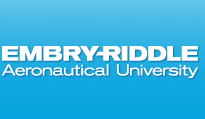Is this project an undergraduate, graduate, or faculty project?
Undergraduate
individual
What campus are you from?
Daytona Beach
Authors' Class Standing
Forrest Dohner, Junior
Lead Presenter's Name
Forrest Dohner
Faculty Mentor Name
Jenny Vu
Abstract
The self-healing polymer investigated in this study is based on polydimethylsiloxane (PDMS) and exhibits intrinsic self-repairing capabilities at room temperature. To achieve this self-healing property, the polymer molecules were end-capped with different alcohols designed to facilitate the formation of hydrogen bonds. These bonds enhance the molecular mobility of the polymer chains, allowing for tunable mechanical properties—ranging from increased rigidity to greater flexibility. To compare the effects of various end-capping molecules, multiple small batches of PDMS were synthesized, each incorporating a different end-capping group. The resulting polymers were then analyzed to observe the differences in their structural and mechanical behavior. This self-healing coating shows significant potential for applications in unmanned aerial vehicles (UAVs).
Did this research project receive funding support from the Office of Undergraduate Research.
Yes, Ignite Grant
Exploring End-Capping Effects on Self-Healing Efficiency in PDMS Polymers for Flexible Sensor Applications
The self-healing polymer investigated in this study is based on polydimethylsiloxane (PDMS) and exhibits intrinsic self-repairing capabilities at room temperature. To achieve this self-healing property, the polymer molecules were end-capped with different alcohols designed to facilitate the formation of hydrogen bonds. These bonds enhance the molecular mobility of the polymer chains, allowing for tunable mechanical properties—ranging from increased rigidity to greater flexibility. To compare the effects of various end-capping molecules, multiple small batches of PDMS were synthesized, each incorporating a different end-capping group. The resulting polymers were then analyzed to observe the differences in their structural and mechanical behavior. This self-healing coating shows significant potential for applications in unmanned aerial vehicles (UAVs).


